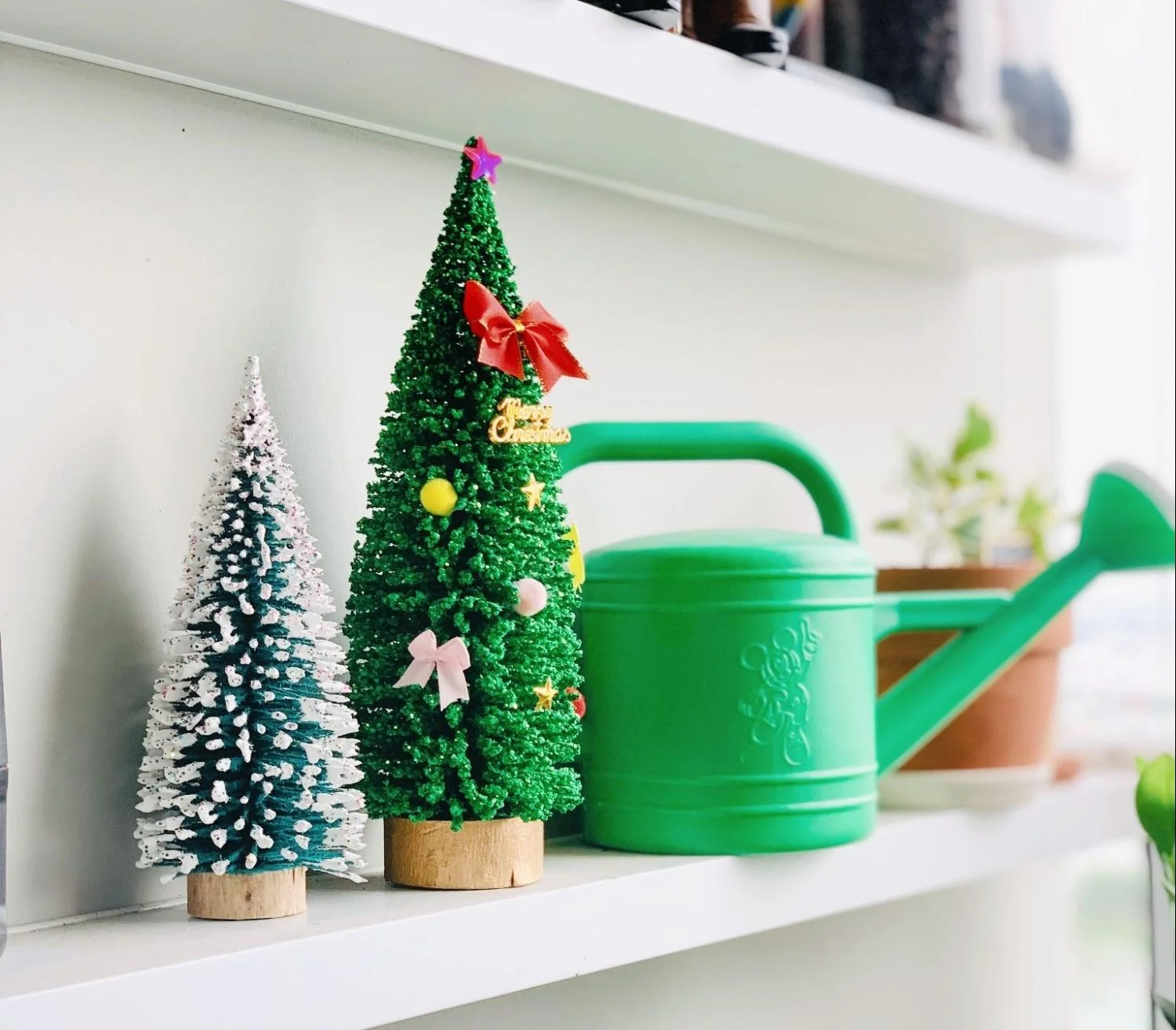
The holiday season brings with it a whirlwind of excitement, traditions, and a charming little helper known as the Elf on the Shelf. This naughty scout elf makes its way into houses, perching in unexpected places and monitoring the children, reporting their behavior back to Santa Claus.
Recommended Reading: Top 50 Science Fair Project Ideas
Elves are wonderful. They provoke wonder. Elves are marvelous. They cause marvels. Elves are fantastic. They create fantasies. Elves are glamorous. They project glamor. Elves are enchanting. They weave enchantment. Elves are terrific. They beget terror.
–Terry Pratchett (from Lords and Ladies)
For young brains, the Elf on the Shelf can serve as an engaging stimulant for scientific inquiry and discovery. This Christmas season, let’s explore some fascinating science concepts inspired by the Elf on the Shelf to spark curiosity and learning. Let’s unravel the mystery.
1. Elf 3D Model
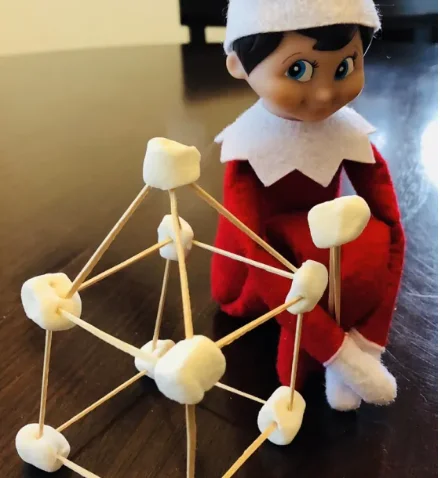
To construct all of the toys for Santa, elves need to be very good with their hands. Watch our elf demonstrate how to construct three-dimensional shapes using toothpicks and marshmallows! We immediately set about attempting to construct the structure depicted here after discovering our elf. This Christmas, our elf has shown us so many interesting science experiments, which we have adored! We hope your elf will also bring some simple science for your kids to see! The best time of the year is indeed here!
Image Source: https://shelovesscience.com/
2. Elf Skittles Trick
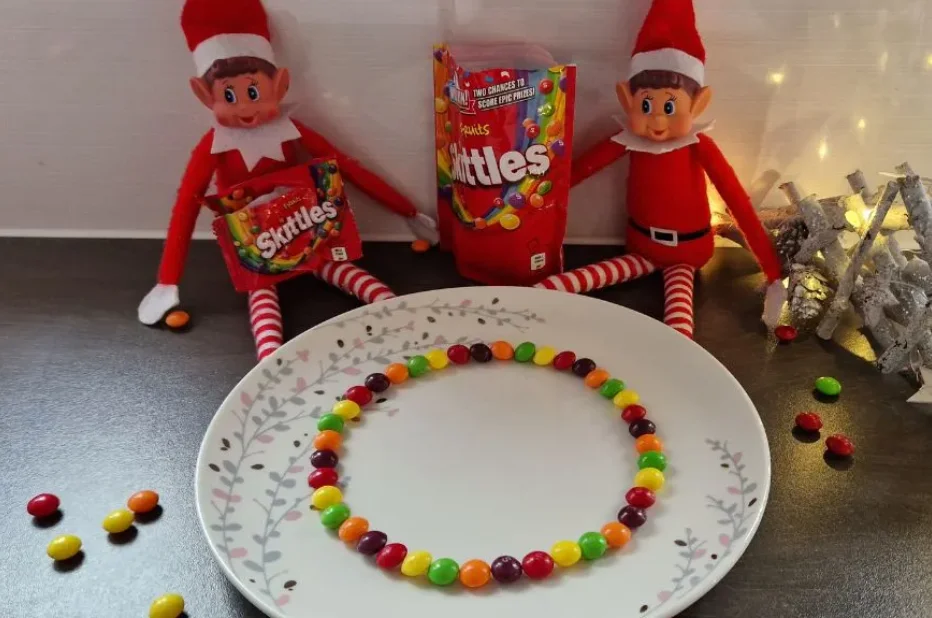
Together, let’s create a vibrant water trick with your elf from skittles! Your kids will love seeing the colors blend together to form a stunning rainbow! A bag of Skittles on a plate, a cup of water, and printable instructions should be left for your elf on the shelf.
All you have to do is arrange the Skittles in a circle on the plate’s edge, pour warm water into the center, and then watch as the colors melt into the water.
The speed at which the colors shift upon contact with water is astounding. The yellow Skittle turns orange, the red turns pink, and so on. This experiment will astound adults and children alike!
The coating on skittles diffuses and dissolves in water. This indicates that the hue permeates the water.
Recommended Reading: 5 Best Science Project Ideas For Kids
3. Salt Painting Science
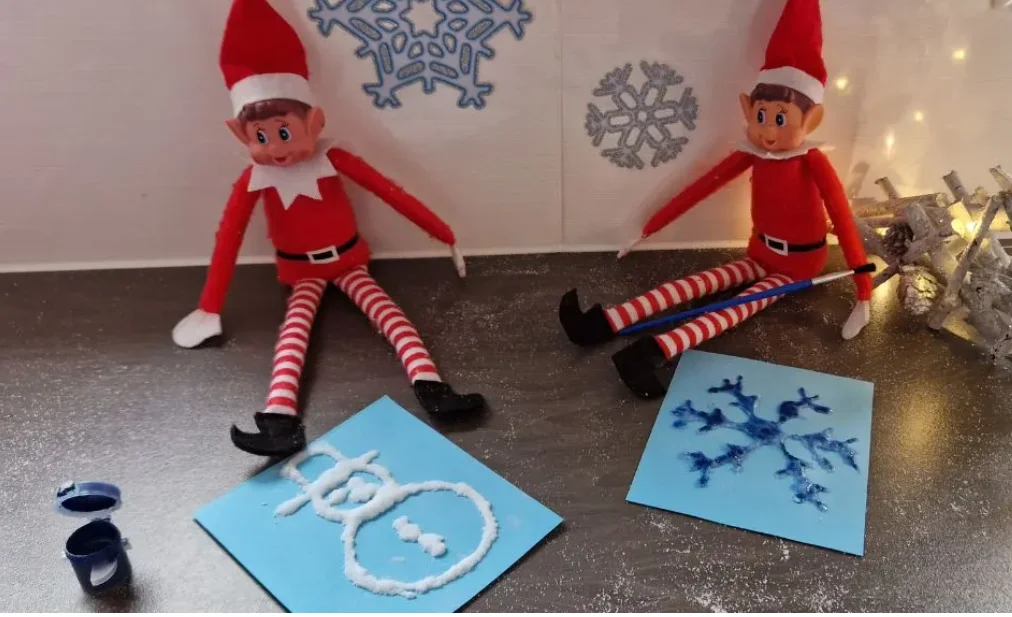
Image Source: https://www.messylearningkids.com/
With your children, do this entertaining salt painting project of snowflakes and snowmen to learn more about the science of absorption. Furthermore, what could be more enchanted than painting as an elf observes? After all, elves are pros at applying salt paint! Prepare the materials next to the elves by downloading and printing the templates and instructions.
Apply a small amount of adhesive to your snowflake template. Make sure to completely cover the template with salt by sprinkling it on. Because salt is hygroscopic, it can take in water. It draws in and dissolves water molecules from the surrounding atmosphere.
4. Cotton Candy Melting Mystery
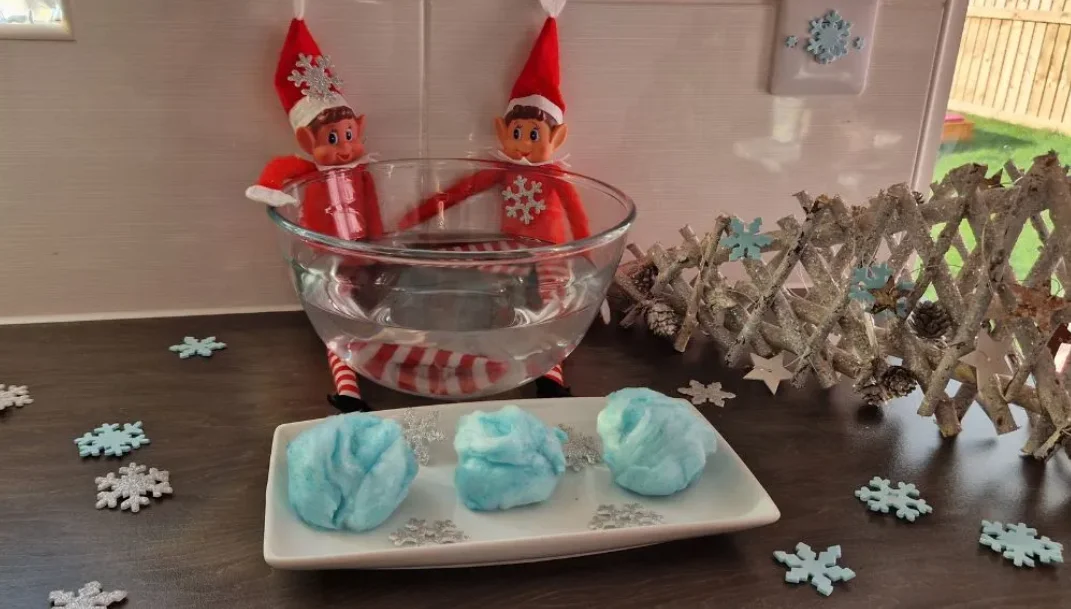
Recommended Reading: 7 Best Science Podcasts For Kids
For this Experiment, Cotton candy (blue), clear bowl, water, small winter-themed toy (such as a snowflake foam sticker). These items will be required.
Make three cotton candy snowballs prior to the setup. Put a tiny plastic snowflake toy in one of them. After adding tap water to the transparent bowl, arrange the elf, bowl, cotton candy balls, and printed directions to make your scene.
Give your kids a task to guess which ball contains the surprise. Allow them to drop the balls one at a time into the water once they have placed their bets. Check to see if their assumption was correct by watching what happens with the cotton candy.
5. Christmas Ice that fizzes
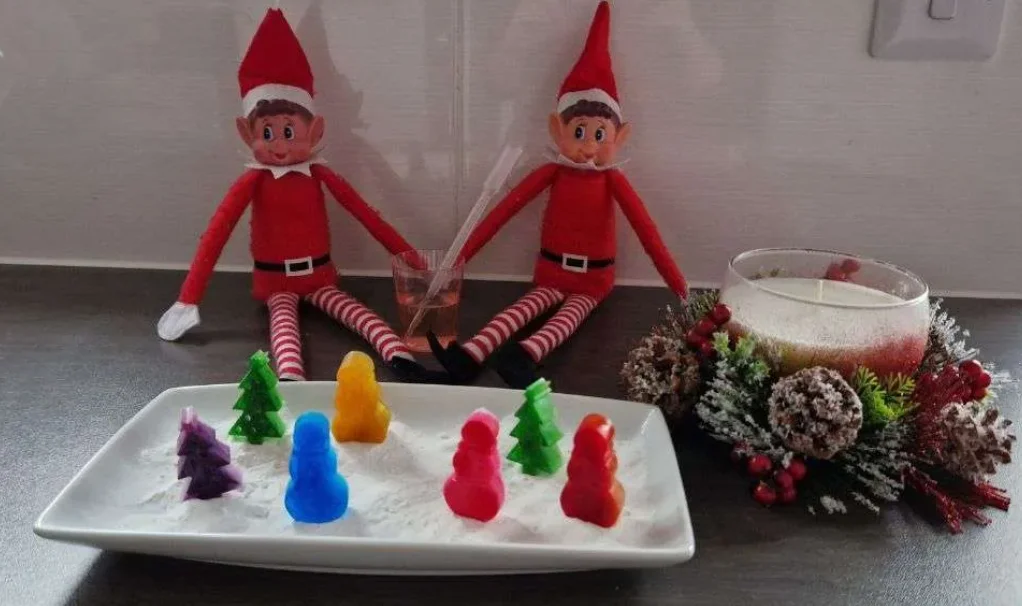
Searching for something new to do with the kids that involves science? For you, our hard working elves have a fantastic idea. While your children play, you may relax and savor a hot chocolate with marshmallows.
Combine one part baking soda, one part water, and a few drops of food coloring. Spoon mixture into silicone mold. After that, freeze it for the entire night.Once a deeper tray has been filled with baking soda, arrange your ice figurines on it.
Using pipettes, prepare a cup of vinegar. Get your kids involved in a fun science play by setting up a scene with the elves.
Pour vinegar into the pipette and then release it onto the ice.
The vinegar and baking soda are like two best buddies who don’t really get along. However, they generate a lot of noise and mess when they’re together!
They bring about a chemical exchange. When the vinegar and baking soda are combined, their acidic and basic properties cause a frothy response.
Conclusion
We have learned about a world of inquiry and discovery that lies beyond the realm of magic through the joyous voyage of the Elf on the Shelf. These were some of the science ideas that you can incorporate this Christmas and the children would love them too.
We hope the Elf on the Shelf not only brings joyful surprises but also sparks a lasting curiosity and passion for learning—maybe even inspiring the next generation of robotics enthusiasts!
Moonpreneur is on a mission to disrupt traditional education and future-proof the next generation with holistic learning solutions. Its Innovator Program is building tomorrow’s workforce by training students in AI/ML, Robotics, Coding, IoT, and Apps, enabling entrepreneurship through experiential learning.


























The Skittles trick is quick and easy, while the cotton candy experiment takes more time and can be messy. I’d suggest starting with something simple like the stash slime because elves cannot resist from playing with slime.
My kids and their friends had such a fun time doing the Elf Magnetism experiment together! Our little elf showed us how jingle bells are made of metal, which magnets can stick to. One of the best moments was when my kids excitedly said, “Wow, I didn’t know jingle bells would stick to magnets!” This sparked their curiosity, and we spent the rest of the day testing what else magnets could stick to. It was a great hands-on learning experience!